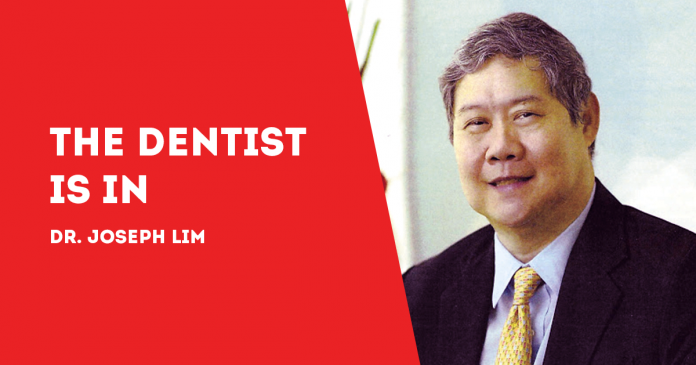
(By Dr. Joseph D. Lim and Dr. Kenneth Lester Lim, BS-MMG, DDM, MSc-OI)
THERE is a growing interest in saliva as a diagnostic tool.
Not only are the same proteins present in blood are also present in saliva, saliva tests are relatively simple, faster, cheaper, minimally invasive, and potentially safer as a diagnostic tool.
It is more economical, for example, to collect saliva than to draw blood, especially in children and elderly patients.
Of course, saliva tests won’t replace blood tests for all diagnoses. Blood tests are a well-established, proven procedure.
In the future, however, they could prove to be a potentially life-saving alternative to detect diseases where early diagnosis is critical, such as certain cancers, according to Manjul Tiwari, writing about the science behind human saliva in the Journal of Natural Science, Biology and Medicine.
Several tests are already in the pipeline, from testing for pregnancy to detecting alcohol and other drugs.
One of the challenges in developing new saliva tests, however, is that little is known about the human proteome, or set of proteins, particularly those that can serve as natural indicators of diseases.
“Scientists have long recognized saliva as a mirror of the state of the body’s health,” writes Dr. Tiwari.
Testing for HIV, the virus that causes AIDS, is one example. Another is the diagnosis of breast cancer and other malignancies at a sufficiently early stage so that treatment is likely to be successful, he says.
Saliva provides inexpensive testing which will reduce affordability and accessibility barriers to early diagnosis, he writes.
“Each of us may have inside our mouths a key to the pathological and disease biomarker library hidden inside our bodies,” he continues.
“Saliva – the source of all this information – is the secretory product of glands located in or around the oral cavity. If we could read the stories of diagnostic information present within saliva, then the abundance of information waiting to be found could be comparable to a vast vault of information such as the internet.”
Dr. Tiwari says highly sensitive and high-throughput assays such as mass spectrometry, RT-PCR, microarray, and nano-scale sensors can measure proteins and nucleic acids with a minimal amount of sample requirement in a short period of time. This allows scientists to broaden the utility of saliva as a diagnostic tool.
As research evidence accumulates, saliva-based diagnostics are being widely accepted by clinicians and patients, he writes.
“The non-invasive nature and ease of collection have made saliva the fluid of choice for not only diagnostic but also the more important health surveillance purposes.”
***
Dr. Joseph D. Lim, Ed. D., is the former Associate Dean of the College of Dentistry, University of the East; former Dean, College of Dentistry, National University; Past President and Honorary Fellow of the Asian Oral Implant Academy; Honorary Fellow of the Japan College of Oral Implantologists; Honorary Life Member of the Thai Association of Dental Implantology; and Founding Chairman of the Philippine College of Oral Implantologists. For questions on dental health, e-mail jdlim2008@gmail.com or text 0917-8591515.
***
Dr. Kenneth Lester Lim, BS-MMG, DDM, MSc-OI, graduated Doctor of Dental Medicine, University of the Philippines, College of Dentistry, Manila, 2011; Bachelor of Science in Marketing Management, De la Salle University, Manila, 2002; and Master of Science (MSc.) in Oral Implantology, Goethe University, Frankfurt, Germany, 2019. He is an Associate Professor; Fellow, International Congress of Oral Implantologists; Member, American Academy of Implant Dentistry and Fellow, Philippine College of Oral Implantologists. For questions on dental health, e-mail limdentalcenter@gmail.com./PN



